Automated Dropshipping 2026: What It Is & Best Tools to Do It
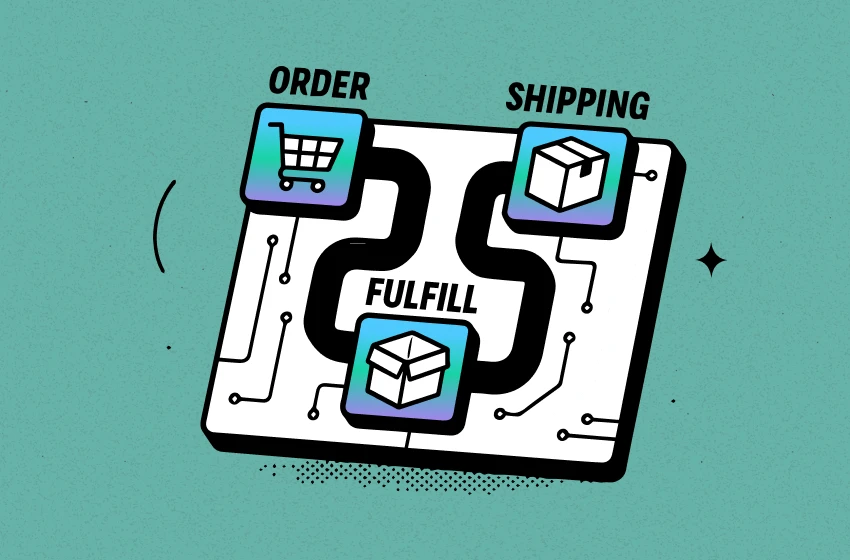
Running a dropshipping business in 2026 is no longer about juggling dozens of manual tasks every day. With AI and automation tools, you can now build, manage, and scale your store almost on autopilot — from finding products and writing descriptions to fulfilling orders and responding to customers.
In this article, we’ll explain what automated dropshipping is, its pros and cons, the best tools to do it, and how to get started step by step.
What is Automated Dropshipping?
Automated dropshipping is an ecommerce model where a seller outsources some operational tasks to a third party, with the automation system working underneath.
There are 7 types of dropshipping automation:
- Inventory management
- Order fulfillment and tracking
- Store builder
- Product research
- Customer support automation
- Email and marketing workflows
This model is very common in dropshipping today. According to the Retail and CPG Annual Report, 77% of retailers now use or piloting AI to run their stores with less effort and more accuracy.
Pros and Cons of Automated Dropshipping
Pros
1. Saves Time
One of the biggest advantages of automation is the time it saves for merchants. Tasks like importing products, updating inventory, processing orders, or sending tracking information can all be handled automatically, which means fewer manual effort and more time to focus on growth strategies — like testing new products or improving ad campaigns.
2. Greater Accuracy
Human error is one of the biggest hidden costs in manual dropshipping operations. Automation helps remove these mistakes, keeping processes like order fulfillment, SKU entry, and shipping details consistent and accurate.
While most automation apps are well-tested and rarely fail, it’s smart to test the app regularly, especially during peak seasons, to make sure it runs smoothly. Doing so helps you avoid the back-and-forth stress of troubleshooting problems when your store is at its busiest.
3. Faster Decision-Making
Ultimately, all these benefits lead to faster decision-making. When an automation app delivers accurate information in real time, merchants can act quickly and confidently. Over time, this quick, data-backed decision process becomes second nature, driving growth with far less guesswork.
Cons
1. Upfront Cost
Many third-party apps charge monthly or usage-based fees. There're still free automation apps available, and many are great for beginners. However, as your sales grow and your business strategy evolves, these free tools often become too limited. Upgrading to a paid app with more advanced features is usually the smarter move—as long as it fits within your planned budget.
2. Setup Requirement
Before your automation apps can run smoothly, you’ll need to connect product feeds, sync your store’s data, and adjust each app’s settings to match your workflow. For beginners, this setup process can feel overwhelming — especially when managing multiple apps that need to work together seamlessly.
Best Automated Dropshipping Tools for 2025
Automation works best when you combine the right tools for each part of your dropshipping store. Here are the top-rated ones to consider as you prepare for 2026.
1. AutoDS – Best for All-in-One Dropshipping Solution
AutoDS is an all-in-one dropshipping automation platform that helps store owners save time while managing every aspect of their store. From product research to listing and order processing, AutoDS automates repetitive tasks so merchants can focus on scaling and strategy.

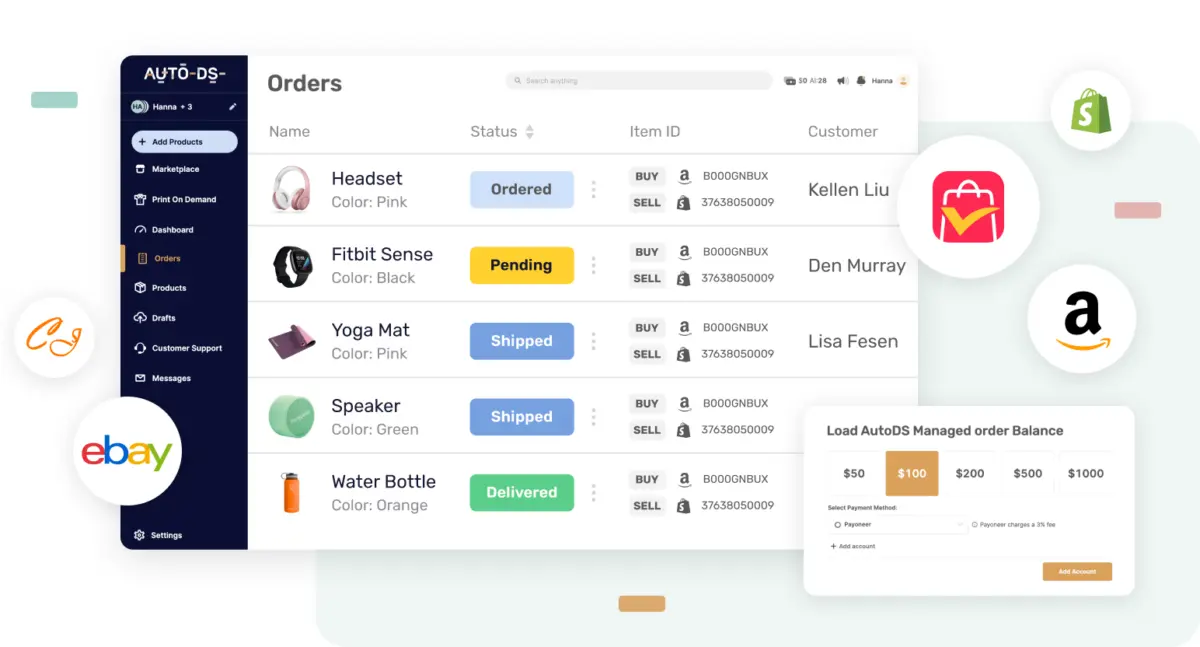
Key Benefits:
- Automated product imports: Quickly add products from multiple dropshipping suppliers.
- Smart order fulfillment: Automatically fulfill orders and track orders status in real-time.
- AI-built Shopify store: Built store in minutes with ready-to-use templates.
- Smart product research tool: Spot trending dropshipping products across multiple channels.
- Seamless integration: Direct integration with Shopify, eBay, Wix, Etsy, TikTok Shop, and more.
2. Spocket – Best for Product Sourcing and Order Fulfillment
Spocket is a dropshipping software that links Shopify, WooCommerce, and other eCommerce users with verified suppliers across the US and EU. It streamlines sourcing with faster shipping and high-quality products. Its new AI-driven product research feature helps merchants pinpoint trending, high-demand items through real data and insights.


Best Features:
- Automates order fulfillment with real-time tracking and updates.
- Connects with reliable local suppliers in the US and EU.
- Imports products directly into your store in just a few clicks.
- Seamlessly integrates with Shopify, WooCommerce, BigCommerce, Squarespace, and more.
- Uses AI insights to help filter and find high-margin products.
3. Flair – Best for Product Content Generation
Flair.ai makes it easy for dropshippers to create professional-looking visuals without the time or cost of traditional photoshoots. Using AI, it generates realistic images and videos that elevate your brand presentation.

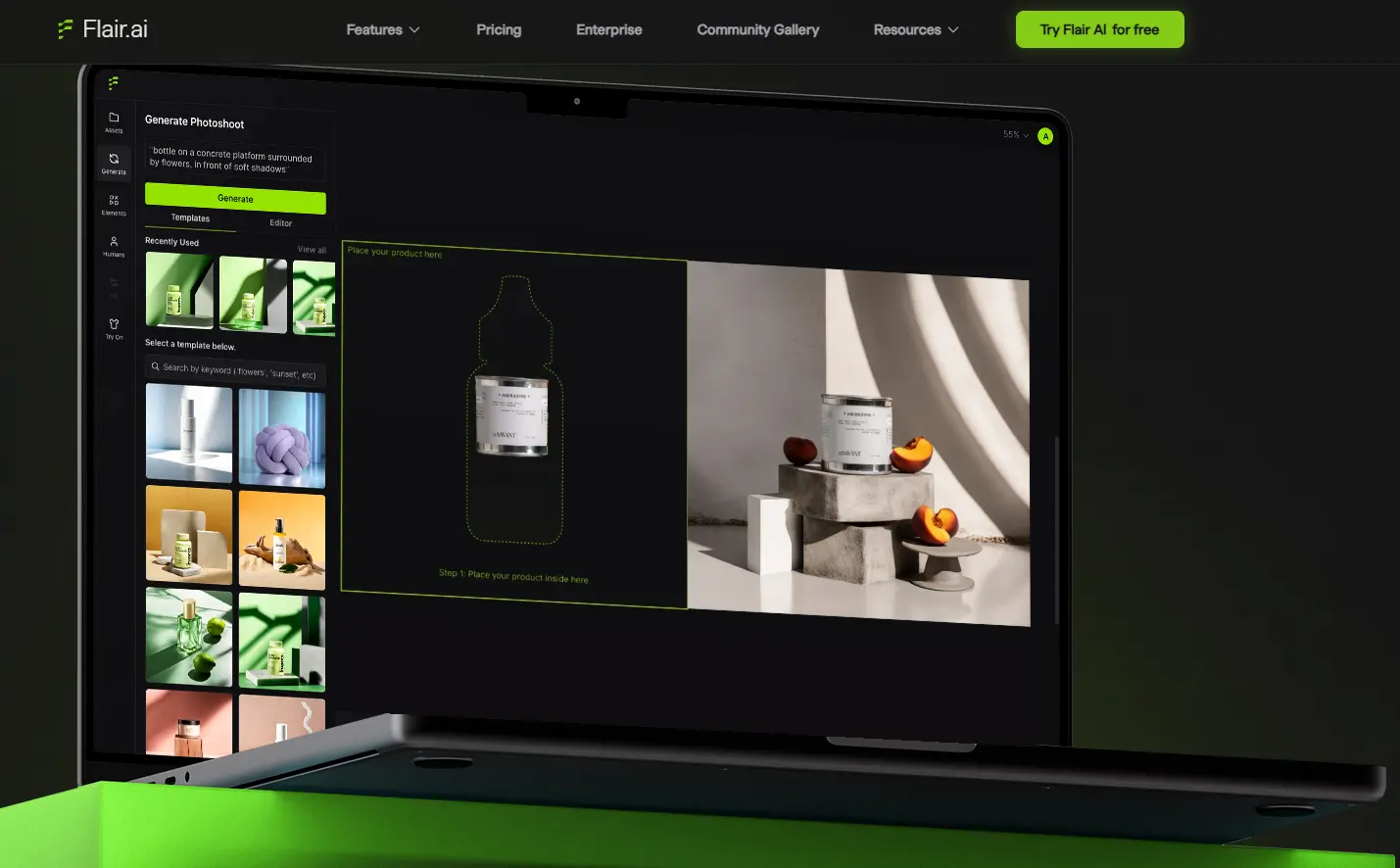
Best Features:
- Instantly create ads, videos, and product images with drag-and-drop simplicity.
- Personalize every detail — props, lighting, and backgrounds.
- Use AI-generated human models that look natural and authentic.
- Access a wide range of templates for ad and landing page content.
4. Pencil – Best for AI Ad Creatives
Pencil is an AI-powered ad creation tool that turns simple text ideas into high-quality, ready-to-run ad creatives. Just type a prompt — like “two young women sitting on separate twin beds” — and Pencil instantly generates multiple polished, brand-consistent ads, saving dropshippers hours of manual work.

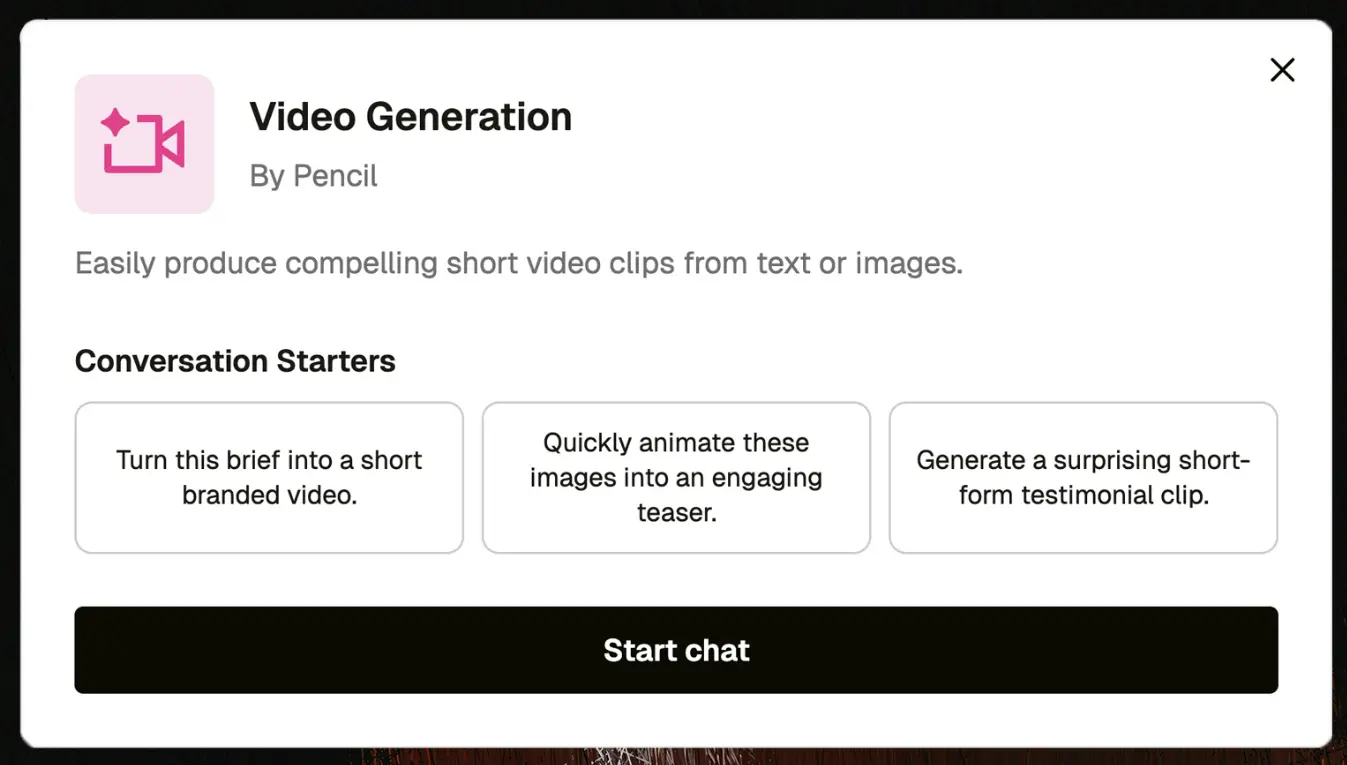
Best Features:
- Transform text prompts into professional, publish-ready ads.
- Generate multiple ad assets using pre-built templates.
- Customize, localize, and translate ads for different audiences.
- Produce thousands of ad variations instantly to optimize reach and performance.
5. Omnisend – Best for Automated Email & SMS Marketing
Omnisend is a robust email and SMS marketing automation platform that helps Shopify merchants engage customers with timely, personalized messages. It streamlines multi-channel campaigns, enabling stores to drive sales and improve customer loyalty without extra manual effort.

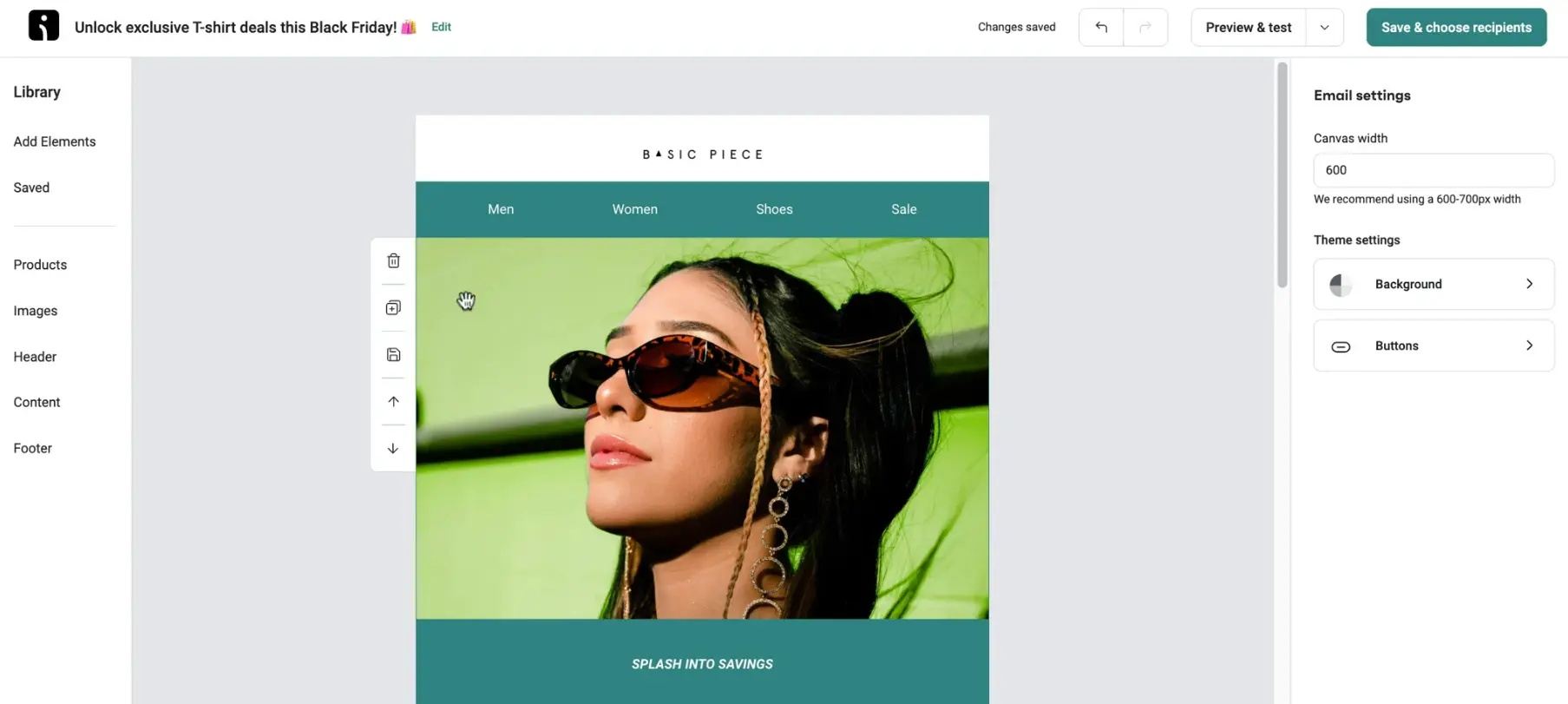
Best Features:
- Pre-built automation workflows: Automate cart recovery, product recommendations, and follow-ups effortlessly.
- Multi-channel integration: Reach customers via email, SMS, push notifications, and Facebook Messenger.
- Advanced segmentation: Personalize campaigns based on customer behavior, preferences, and purchase history.
- A/B testing and analytics: Optimize campaigns with actionable, data-driven insights to maximize ROI.
6. Tidio (Lyro Agent) – Best for Customer Support
Lyro, Tidio’s AI-powered chatbot, engages visitors and resolves customer questions using your brand’s own support content. Powered by Claude (Anthropic), Lyro delivers fast, accurate, and on-brand responses in under six seconds — up to 20x faster than human agents.

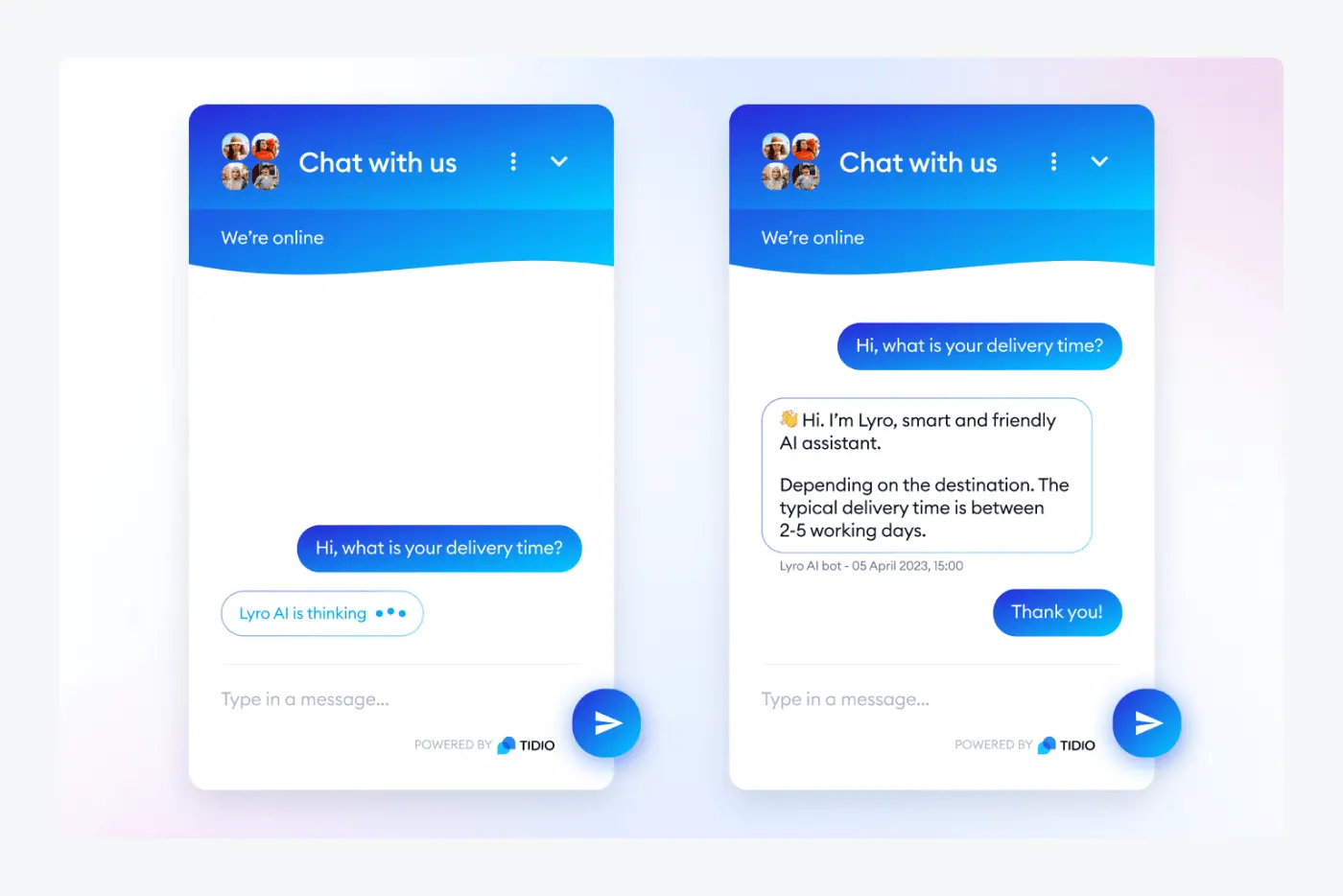
Best Features:
- Automates up to 67% of customer inquiries, reducing manual support workload by two-thirds.
- Provides instant, human-like replies to improve customer satisfaction.
- Uses only your verified content for accurate, brand-consistent answers.
- Seamlessly escalates complex queries to human agents.
- Communicates fluently in multiple languages.
- Integrates effortlessly with Zendesk, Intercom, Salesforce, and more.
7. TrueProfit – Best for Automated Profit Tracking & Analytics
Calculating true profit and loss manually is not only time-consuming but also prone to errors, due to the complexity of multiple ad channels, supplier platforms, shipping providers, and other third-party platforms. Without a dedicated automation tool, it’s difficult for merchants to get an accurate picture of their real profitability. That’s where TrueProfit excels at.
TrueProfit is an automated analytics platform that’s specifically built for tracking profit and loss. It automatically calculates every cost — ad spend, product cost, shipping fee, transaction charge, and more — to give merchants the most accurate view of their store’s profitability.


With TrueProfit, Shopify merchants can always stay on top of their finances through built-in features like:
- Real-time profit tracking: Monitor essential financial metrics such as net profit, profit margin, revenue, COGS, ad spend, shipping costs, CAC, CLV, and more.
- Profit per product analytics: Identify which products drive profit — and which drain it.
- Marketing attribution: Evaluate your ad performance and discover the most effective channels.
- P&L reports: Compare performance over weeks, months, or years with detailed reports.
- Customer LTV: Measure long-term customer value against acquisition costs.
How to Automate Your Dropshipping Business
Here’s 3 steps in automating your dropshipping store:
Step 1: Choose the Right Automation App
Automation apps are essential, but that doesn’t mean every automation app will be equally important to your store or that you should install every tool at once.
To pick the right automation app for your store, focus on three criteria:
- Business performance impact: Does this app help you achieve measurable growth?
- Cost efficiency: Does the benefit outweigh the subscription cost? Go for tools that offer solid ROI.
- Necessity: Is this app a must-have or just nice to have? Focus on tools that your business can’t function properly without.
Choosing automation apps based on these three factors ensures you invest wisely in tools that truly move the needle for your dropshipping business.
Step 2: Integrate with Your Dropshipping Store
Once you’ve chosen the right automation tools, the next step is connecting them with your dropshipping store. A well-integrated setup means product details, inventory levels, and order statuses update automatically in real time.
Most automation tools designed for Shopify or WooCommerce offer direct plug-ins or one-click integrations, making the process straightforward. Still, it’s important to double-check each integration’s compatibility and settings before activating it. A small mistake such as mismatched product IDs or incorrect tracking links, can lead to bigger inaccuracies later on.
Step 3: Manage Tool Performance
Even the most advanced app can lose its value if it’s not monitored or optimized over time. Once your tools are up and running, it’s important to regularly review how each one contributes to your store’s performance.
Depending on apps capacity, let’s keep an eye on how they affect store speed, accuracy, and profit margins. Some tools may overlap in function or create unnecessary data syncs that slow down performance.
Final Thoughts
As we move into 2026, automated dropshipping is becoming the new standard of running the most successful dropshipping store. By combining the right automation tools with a solid marketing strategy, you can grow faster and work smarter.
Automation won’t replace your entrepreneurial creativity, but it will give you the time and systems to focus on what truly matters — building a brand that lasts.
Leah Tran is a Content Specialist at TrueProfit, where she crafts SEO-driven and data-backed content to help eCommerce merchants understand their true profitability. With a strong background in content writing, research, and editorial content, she focuses on making complex financial and business concepts clear, engaging, and actionable for Shopify merchants.




